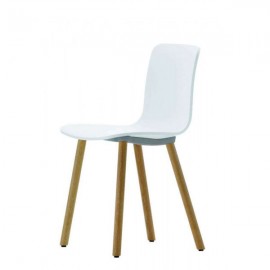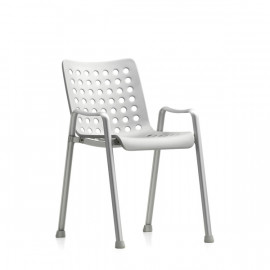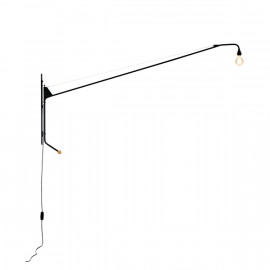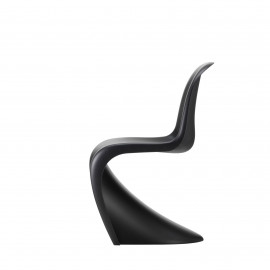Vitra
'Special is generally less useful than normal': this statement sums up Jasper Morrison's guiding principle for creating designs that are not extraordinary but rather 'super normal' and – just like HAL – that show deference to the dictates of daily li..
In 1951 the Japanese-American artist Isamu Noguchi began to design the Akari Light Sculptures, a group of works handcrafted out of shoji paper that eventually comprised over 100 luminaires – table, floor and ceiling lamps. He chose the name 'akari' f..
The HAL Wood chair by Jasper Morrison is part of the multifaceted HAL family. The striking combination of a plastic seat shell and four-legged wooden base lends the chair its unique character. The comfortable seat shell is available in a selection of..
In 1951 the Japanese-American artist Isamu Noguchi began to design the Akari Light Sculptures, a group of works handcrafted out of shoji paper that eventually comprised over 100 luminaires – table, floor and ceiling lamps. He chose the name 'akari' f..
In 1951 the Japanese-American artist Isamu Noguchi began to design the Akari Light Sculptures, a group of works handcrafted out of shoji paper that eventually comprised over 100 luminaires – table, floor and ceiling lamps. He chose the name 'akari' f..
Developed for the 1939 Swiss National Exhibition (Schweizer Landesausstellung), the Landi Chair occupies an important place in the history of twentieth-century design: this classic by Hans Coray established the new typology of a three-dimensionally m..
The Organic Chair – a small and comfortable reading chair – was developed in several versions for the 1940 ‘Organic Design in Home Furnishings’ competition organised by the Museum of Modern Art in New York. With its sculptural shapes, the design was ..
The Organic Chair – a small and comfortable reading chair – was developed in several versions for the 1940 ‘Organic Design in Home Furnishings’ competition organised by the Museum of Modern Art in New York. With its sculptural shapes, the design was ..
Designed as a pivoting wall lamp for the 'Maison Tropique', Potence is regarded as one of Jean Prouvé's puristic masterpieces. The fascination of this luminaire, which is over two metres long and dimmable, stems from the spareness of its materials an..
The Panton Chair is a classic in the history of furniture design. Conceived by Verner Panton in 1960, the chair was developed for serial production in collaboration with Vitra (1967). It was the first chair to be manufactured completely out of plasti..
Verner Panton was one of the most influential figures in the development of design during the 1960s and 1970s. Along with his experimental approach to forms and colours, he was captivated by the potential of plastic, a novel material at the time. His..
With its bright, cheerful colours and smooth curves, the Panton Chair has always been a favourite of children – both as a chair and as a plaything. This led Verner Panton to consider the the idea of producing a child-size version of the chair togethe..
Charles and Ray Eames spent many years experimenting with new techniques for producing three-dimensionally moulded plywood seat shells that conformed to the contours of the human body. They achieved this with the chairs in the Plywood Group, which ha..
Charles and Ray Eames spent many years experimenting with new techniques for producing three-dimensionally moulded plywood seat shells that conformed to the contours of the human body. They achieved this with the chairs in the Plywood Group, which ha..
The design of the Soft Pad Group dates from the year 1969. In terms of both construction and shape, the Soft Pad Chairs are similar to the design of the Aluminium Group, but their sewn-on cushions create a striking contrast to the slender aluminium p..
The seat construction of the Softshell Chair ensures a level of comfort that is first revealed upon use: vertical ribs concealed in the back shell adapt to the user, providing freedom of movement as well as superb comfort, even for prolonged periods ..
















